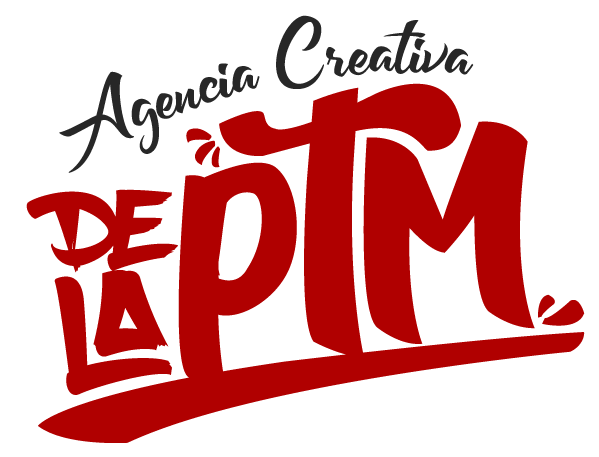For example, a business with a high inventory turnover may have a lower working capital ratio but still be in good financial health. With loan terms of up to 18 months, the American Express Business Line of Credit is a convenient choice for those looking for short-term funding. Its streamlined application process takes just minutes to complete, granting eligible borrowers up to $250,000 in funds with no prepayment penalties attached.Still, it may not be the best fit for all borrowers. A minimum credit score requirement of up to 660 means that it’s only a fit for those with good or excellent credit scores. Plus, as a business owner, you’ll be on the hook with a personal guarantee if your business can’t afford to pay back the loan.
- So when thinking about how much working capital your business needs, it is important to look toward the future so your business can continue to thrive and grow.
- Continuous working capital issues leave companies unable to grow and develop since all current assets go toward operational costs.
- This means that the company has two dollars in current assets for every dollar in current liabilities.
- In an ideal business, you would want to use your customers’ money to pay your suppliers.
- Dell’s exceptional working capital management certainly exceeded those of the top executives who did not worry enough about the nitty-gritty of WCM.
Get step-by-step guidance on investing in Microsoft stock and learn the ins and outs of this technology company. Get step-by-step guidance on investing in Google (aka Alphabet) stock and learn the ins and outs of this behemoth tech company. Opinions are our own, but compensation and in-depth research may determine where and how companies appear.
Current assets
The current portion of debt (payable within 12 months) is critical because it represents a short-term claim to current assets and is often secured by long-term assets. Working capital is the amount of money that a company can quickly access to pay bills due within a year and to use for its day-to-day operations. A company with a ratio of less than 1 is considered risky by investors and creditors since it demonstrates that the company may not be able to cover its debts, if needed. However, a very high current ratio (meaning a large amount of available current assets) may point to the fact that a company isn’t utilizing its excess cash as effectively as it could to generate growth. While not always bad, continuous negative working capital can signal serious problems. Preventing them involves adjusting the approach to current assets and current liabilities.
For example, developing new products and services, looking for new markets, planning ahead to remain competitive. The working capital ratio is sometimes referred to as the current ratio as the measure is generally calculated quarterly, that is, on a “current” short-term basis. Consequently, the value of a working capital ratio is highly dependent on how well you’ve managed to streamline your accounts receivable function, credit, and inventory management. Working capital management requires coordinated efforts to optimize both inventory and accounts receivable in order to illustrate one aspect of actual liquidity. A working capital loan, also known as a cash flow loan , can be used to increase your working capital when you are looking to finance growth projects, or to help your business tide over cash shortfalls. In an ideal world, you would sell your goods, get your revenue from those sales and then pay your bills.
- By understanding what a “good” ratio looks like in their industry, companies can set realistic goals for improving their performance and benchmark their progress over time.
- When working capital ratio is above 1, a business can theoretically pay off all its liabilities with its existing assets.
- In other words, it measures the health of your company’s short term finances.
- A lack of working capital can make it difficult to meet short-term obligations, and if the company is unable to address these issues, it may eventually become insolvent.
- Solvency means a situation in which a firm can easily repay its debts as and when they mature.
For example, Microsoft’s working capital of $96.7 billion is greater than its current liabilities. Therefore, the company would be able to pay every single current debt twice and still have money left over. At the end of 2021, Microsoft (MSFT) reported $174.2 billion of current assets. This included cash, cash equivalents, short-term investments, accounts receivable, inventory, and other current assets. Companies can forecast what their working capital will look like in the future. By forecasting sales, manufacturing, and operations, a company can guess how each of those three elements will impact current assets and liabilities.
Strategies for Effective Working Capital Management
It doesn’t do a great job of collecting receivables from customers or a great job of taking longer to pay suppliers. It can use this money for investments, product development, new projects and more. However, if a company is holding on to excess working capital without making any efforts to use it, it’s missing opportunities for growth. When a company does not have enough working capital to cover its obligations, https://personal-accounting.org/what-is-taken-into-account-a-great-working-capital/ financial insolvency can result and lead to legal troubles, liquidation of assets, and potential bankruptcy. In this perfect storm, the retailer doesn’t have the funds to replenish the inventory that’s flying off the shelves because it hasn’t collected enough cash from customers. The suppliers, who haven’t yet been paid, are unwilling to provide additional credit, or demand even less favorable terms.
If a company’s current assets equal its current liabilities, its working capital is neutral. While this may seem like a perfect situation, it could pose a certain danger to the company’s financial integrity. When you apply for a line of credit, lenders will consider the overall health of your balance sheet, including your working capital ratio, net working capital, annual revenue and other factors. An alternative measurement that may provide a more solid indication of a company’s financial solvency is the cash conversion cycle or operating cycle. The cash conversion cycle provides important information on how quickly, on average, a company turns over inventory and converts inventory into paid receivables. Another way to review this example is by comparing working capital to current assets or current liabilities.
Working Capital: The Quick Ratio and Current Ratio
Therefore, by the time financial information is accumulated, it’s likely that the working capital position of the company has already changed. Current liabilities are simply all debts a company owes or will owe within the next twelve months. The overarching goal of working capital is to understand whether a company will be able to cover all of these debts with the short-term assets it already has on hand. In the corporate finance world, “current” refers to a time period of one year or less. Current assets are available within 12 months; current liabilities are due within 12 months. A working capital below 1.0 is considered to be an indicator of possible liquidity issues whereas a working capital ratio above 2 may suggest that a company is not utilizing its assets effectively to generate revenues.
Company A may have enough to pay for new equipment, additional inventory, expansion opportunities, etc. Whereas Company B and C may need to take out an advance or loan. This is especially difficult for seasonal businesses, who often take out an advance so they can pay their debt when their income fails to exceed their debt during their slower months. The company can avoid taking on debt when unnecessary or expensive, and the company can strive to get the best credit terms available. The company can be mindful of spending both externally to vendors and internally with what staff they have on hand.
How Does a Company Calculate Working Capital?
So for example, the cash used to fund growth in the short-term such as inventory and accounts receivable is considered working capital. When calculating the company’s working capital ratio, it must be considered along with other liquidity factors and financial ratios to paint a more accurate picture of the company’s liquidity. Also, normal business operations and capital expenditures may result in varying levels of working capital where it would not be accurate to draw the conclusion that the company has liquidity issues. Having a good working capital ratio (WCR) suggests that a company has good operating liquidity to cover its financial obligations. To calculate the working capital ratio, you can get the current asset and current liability numbers from a company’s balance sheet. However, having too much working capital can also be a concern as it may indicate that the company is not investing enough in growth opportunities or may be holding excess inventory.
What Is the Working Capital Ratio?
To reflect current market conditions and use the lower of cost and market method, a company marks the inventory down, resulting in a loss of value in working capital. Working capital (as current assets) cannot be depreciated the way long-term, fixed assets are. Certain working capital, such as inventory, may lose value or even be written off, but that isn’t recorded as depreciation. The exact working capital figure can change every day, depending on the nature of a company’s debt. What was once a long-term liability, such as a 10-year loan, becomes a current liability in the ninth year when the repayment deadline is less than a year away.
How Do You Calculate Working Capital?
Calculating the working capital gives businesses a clear understanding of how many short-term liquid assets they have available after covering their short-term liabilities. This information is vital for performing financial analysis, managing cash flow and making financial predictions. For example, some retailers receive 50% of their revenue during the fall and winter holiday seasons but must pay salaries, rent and taxes all year round. By ensuring a positive working capital, these retailers make regular payments and have sufficient resources to prepare for the new season.
Any business that can’t cover its outstanding financial obligations is headed for major problems, including layoffs, loss of valuable contracts, and even bankruptcy. From your balance sheet, divide your current assets into your current liabilities. If the working capital ratio is negative, it means the company does not have sufficient liquidity and current assets to service its current liabilities. The more positive the number, the more ability there will be to service those liabilities. Clearly, holding more current assets than current liabilities implies a company won’t have any problem meeting its short-term liabilities.


